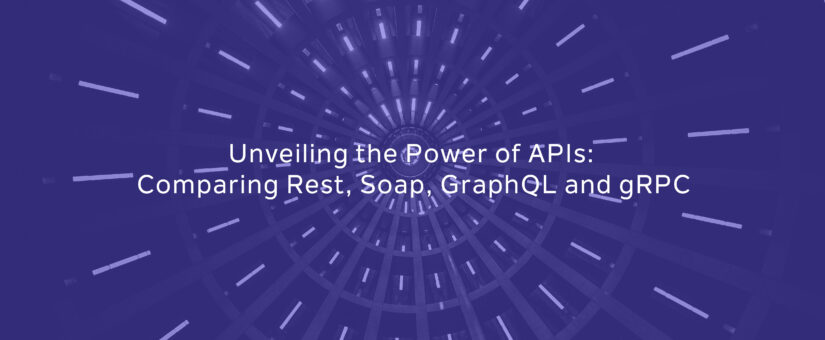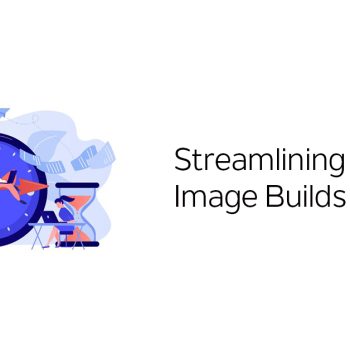
Unveiling the Power of APIs: Comparing Rest, Soap, GraphQL and gRPC
- Posted by Menna El Gadaa
- On February 25, 2024
Over time, different API architectural styles have been released. Each of them has its own patterns of standardizing data exchange
Endless debates on which architectural style is best raised since it’s essential for developers to choose the right API development technology for their projects.
In this blog, I’ll provide a comprehensive comparison of SOAP, REST, GraphQL, and gRPC. I’ll explore the differences between these technologies in terms of performance, strengths, and weaknesses, and use cases to help you choose the right technology for your project.
1- REST (Representational State Transfer):
Rest is an architectural style that developers use to create APIs. It uses HTTP requests to perform operations like GET, POST, PUT, and DELETE on resources.
Rest APIs are stateless which means that calls are made independently of each other and it doesn’t maintain information about previous requests.
Strengths:
• Easy to understand and implement due to their simple and intuitive design principles.
• Supports a wide range of data formats, including JSON, XML, and HTML, making them compatible with various client applications.
• Supports caching which improves performance and reduces server load.
Weaknesses:
• Lack of strict standardization, which can result in inconsistency across implementations.
• Slow performance for large data sets
• Over-fetching and under-fetching
• Do not provide built-in security mechanisms.
When to use:
• When you need to perform basic CRUD (Create, Read, Update, Delete) operations.
• When simplicity, wide compatibility, and ease of integration are important factors.
• When you build applications that require caching
2. SOAP (Simple Object Access Protocol):
SOAP is a lightweight protocol used to create web APIs, it relies on XML as its message, and it supports a wide range of communication protocols across the internet such as HTTP, SMTP, and TCP.
SOAP is stateless by default but it’s possible to make it stateful.
Strengths:
• Supports Web Services Security (WSS) that provides message integrity and confidentiality.
• Adhere to strict standards that make it easier to operate across systems.
• Can be stateful.
Weaknesses:
• Tend to be more complex and require more bandwidth and processing power.
• Involve more overhead due to XML-based message formats, resulting in slower and heavier communication.
When to use:
• When you need to transmit sensitive data.
• When you deal with asynchronous and stateful operations.
3. GraphQL:
GraphQL is an open-source query and manipulation language for APIs, it offers a flexible and efficient way to request and manipulate data.
Unlike traditional APIs, GraphQL allows clients to specify the exact data they need minimizing the amount of data sent over the network. It also allows clients to get all the data they need in a single request.
Strengths:
• Fast as it provides customers with the exact data they need, reducing the amount of unnecessary data transferred over the network.
• Enables clients to fetch data from multiple sources and combine them into a single response, reducing the need for multiple API calls.
• Results from a query are returned in the same structure as the request, enabling predicting the response structure.
Weaknesses:
• Queries always return 200 HTTP status code, regardless of whether that query was successful.
• Caching can be more challenging due to the dynamic nature of GraphQL queries.
• can be overkill for small applications.
When to use:
• When you need efficient data fetching and want to empower clients with flexible querying capabilities.
• When you want to avoid over-fetching or under-fetching.
• When building data-intensive dashboards, or frontend-heavy applications.
4. gRPC (Google Remote Procedure Call):
Before explaining gRPC let’s know what protocol Buffers and RPC are.
RPC:
RPC enables users to work with remote procedures as if the procedures were local using HTTP, TCP, or UDP as its underlying data exchange mechanism.
In RPC, a client sends a request to a process on the server that is always listening for remote calls, the request contains a server function to call, along with any parameters to pass.
Protocol Buffers:
Protocol buffers are language-agnostic data serialization formats that use a binary format for data serialization, resulting in smaller message sizes and faster encoding and decoding compared to textual formats like JSON or XML.
You define how you want your data to be structured once, then you can use the schema definition language (.proto files) to generate code for various programming languages to easily write and read your data to and from a variety of data streams.
So, what is gRPC?
gRPC is a system that implements traditional RPC with several optimizations. For instance, gRPC uses Protocol Buffers and HTTP2 for data transmission, making it faster and more efficient.
Strengths:
• Efficient and fast communication with low latency and high throughput due to the use of protobuf.
• Takes advantage of all HTTP/2 has to offer as Multiplexing and streaming.
• Supports multiple programming languages, allowing for interoperability and flexibility in system integration.
Weaknesses:
• Hard to debug, as messages are binary and not human-readable.
• Works for internal microservices but it’s not an option for a strong external API as it’s not supported through browsers.
• Can be more complex to set up and configure and it requires Protocol Buffers knowledge.
• No predefined status codes.
When to use:
• When you need high-performance, low-latency, and efficient communication between services.
• When building microservices, or real-time applications.
Choosing the right API protocol is a big decision and by understanding the strengths and weaknesses of Rest, Soap, GraphQL and gRPC, you can select the API protocol that best fits your needs.
Whether you prioritize simplicity, flexibility or performance, each protocol has its own appeal and can greatly influence the success of your software.




